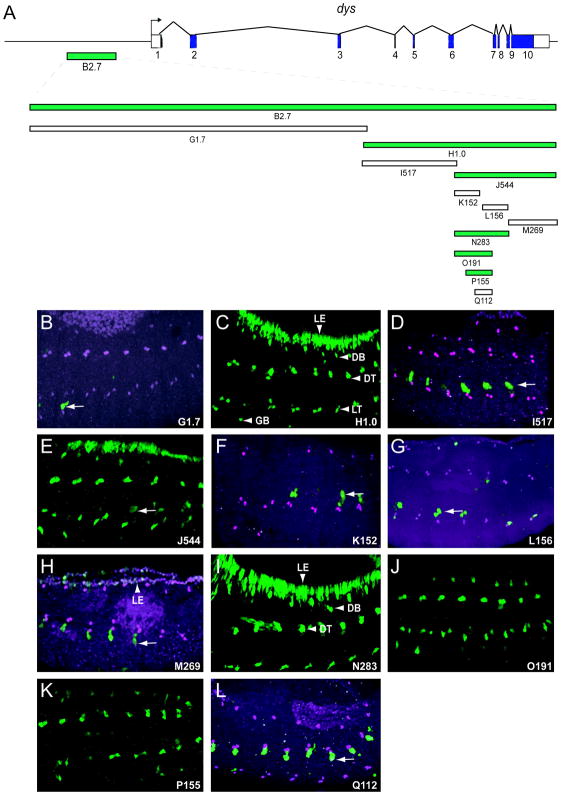Fig. 2.
Reduction of the dys B2.7 fusion cell CRM to a 155 bp fragment. (A) Schematic of the dys gene and derivative fragments tested in vivo. Fragments labeled G–Q with associated number indicating kb or bp. Fragments colored green drove fusion cell expression. (B–L) Fragments H1.0, J544, and N283 had fusion cell and leading edge expression. Fragments O191 and P155 were expressed in only fusion cells. Fragment M269 had weak leading edge expression, and the other fragments (G1.7, I517, K152, L156, and Q112) had no expression in fusion cells or leading edge. Arrows indicate fragment-independent ectodermal expression.

